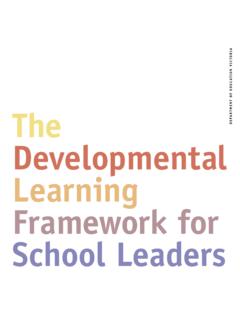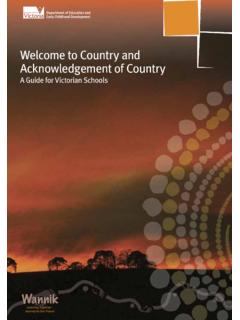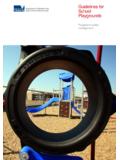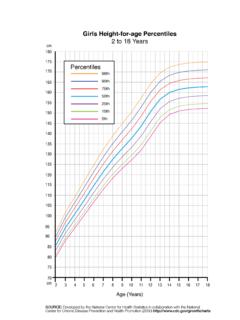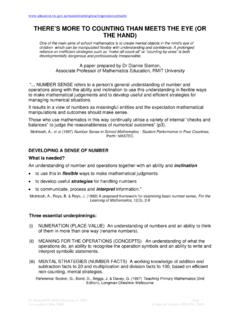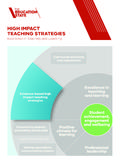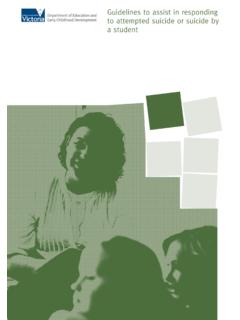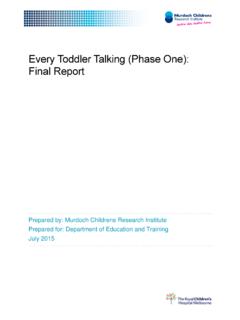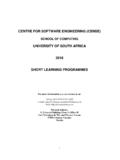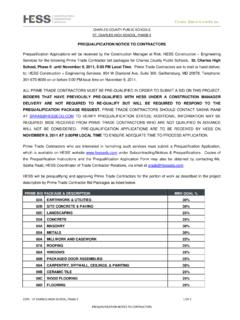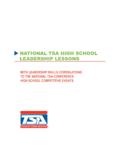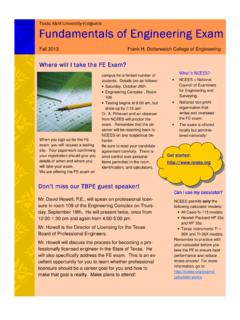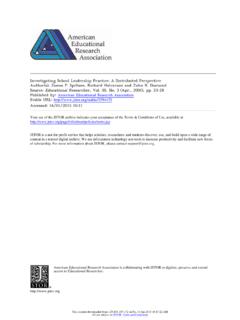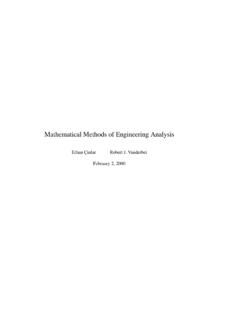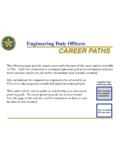Transcription of Welcome to the safe@work Metals and …
1 Welcome to the safe @ work Metals and engineering module . Have you read the General module , completed the test and printed your safe @ work General Award of Attainment? The Metals and engineering module should be done AFTER the General module . If it is some time since you have completed the General module you should read the Review module . The test for the Metals and engineering module contains some questions based on the Review module . There are common hazards that exist in the Metals and engineering industry. It is important to learn about these hazards and how they can be controlled so that people at work are not exposed to risk. The Metals and engineering module contains information on: Mechanical Equipment Forklifts Welding Hazardous Substances and Dangerous Goods Manual Handling Slips Trips and Falls Electricity and Noise.
2 Within the Metals and engineering industry, you may be involved in work activities such as cutting, pressing or casting metal , welding or grinding. Your employer must provide safe work areas and equipment, information, instruction, training and supervision, and personal protective equipment when hazards cannot be eliminated or sufficiently reduced by other means. Key Point You must follow safety instructions and use equipment safely, not only for your own safety, but also the safety of others. Mechanical Equipment Employers may use a wide range of mechanical equipment in the Metals and engineering industry, including guillotines, power presses, brake presses and angle grinders. Mechanical equipment can be hazardous. It may cause sprains and strains, open wounds, fractures, amputations and even death.
3 Note: Students on work experience must not operate powered tools or mobile plant. This information is designed to give students an understanding of the hazard and some of its risk control measures. This publication is based on WorkSafe Smart Move (copyright State of Western Australia) published by Worksafe, Department of Consumer and Employment Protection, Western Australia ( ) metal guillotines are used to cut sheets of metal . They usually have clamps fitted to hold the sheet of metal being cut, as well as a blade. The most common metal guillotine injuries are crushed or amputated fingers. Other injuries are from fingers jamming under the sheet of metal being cut, and strain injuries while handling large and awkward sheets of metal . Power presses are large machines used to stamp, cut or form metal material.
4 Power presses are fitted with a physical guard or a light beam guard to protect the operator's hands. Serious injury such as amputated fingertips may result from a power press with out a guard or one that does not work properly. Angle grinders are hand held tools with a rotating disc used for grinding metal . They are designed for grinding and not as a cutting tool. They can be dangerous if not kept in good order and if not used safely. If the disc is damaged or over tightened it can shatter or explode, sending pieces flying across the workshop. Most angle grinder injuries are from metal particles lodging in the operator's eye. The most serious injuries are from kickback where the disc is thrust violently away from the object it is grinding and back towards the operator. Kickback can result in severe cuts to hands, arms, head, torso and legs.
5 Common Injuries The most common injuries from mechanical equipment are to hands and fingers, which may be cut, sprained, dislocated, broken, crushed or severed by machinery or tools. These injuries can cause lengthy periods of time off work and sometimes they can result in permanent disability. Eye injuries caused by mechanical equipment accidents include being hit by an object (for example, small particles such as metal shavings as well as large objects or pieces of equipment); heat; radiation; hitting an object; and falls, trips and slips. Key Point When mechanical equipment hazards cannot be eliminated to increase protection you may need to wear personal protective equipment (PPE). Personal protective equipment (PPE) used in the Metals and engineering industry includes safety glasses or goggles, earplugs or earmuffs, protective gloves, overalls or other close fitting clothing and safety shoes or boots with steel toe-caps to protect your feet if any items are dropped.
6 Your employer must: have a maintenance program to make sure all equipment and machines are in safe working order have a system in place for locking out and isolating machinery during maintenance, cleaning and repairs train employees to operate any item of mechanical equipment before they use it, and make sure appropriate supervision is provided. If employees are not sure how This publication is based on WorkSafe Smart Move (copyright State of Western Australia) published by Worksafe, Department of Consumer and Employment Protection, Western Australia ( ) to use any item, ask your supervisor for instruction, and provide the personal protective equipment you need, and instruct you in how to wear and use it correctly. What you should do When you are operating any equipment, you must follow safe work procedures as instructed by your employer or supervisor.
7 These may include: wearing clothing that will not catch in moving parts wearing the personal protective equipment provided by your employer operating the machinery and equipment correctly and safely according to your training and agreed safe work procedures keeping all guards in place making sure guards removed during cleaning are replaced by an authorised person before you use the machine switching off machinery and equipment when not in use, and locking out and isolating machinery before any repair, adjustment, cleaning or maintenance is done concentrating on the job, as distractions can contribute to injuries, and keeping the area around the equipment or machinery clean. Key Point Keep all guards in place - they are fitted to protect you from moving parts. Current Department of Education & Training policy: prohibits students undertaking tasks that include the use of machines such as: rip saw band saw buzzer thicknesser guillotine spindle moulder docking saw, and power wood shapers.
8 This is not an exhaustive list. No student should be asked to perform work on any machine that may present significant risks in operation. work experience activity in such cases must be limited to observing, under supervision, trained and experienced operators. The health and safety information here is designed to give students an understanding of the hazards and of the measures by which risks are controlled in the Metals and engineering industry. This publication is based on WorkSafe Smart Move (copyright State of Western Australia) published by Worksafe, Department of Consumer and Employment Protection, Western Australia ( ) Forklifts Forklifts are often used in the Metals and engineering industry to load, unload and move materials around work places. They can be dangerous if not driven and operated correctly.
9 Since 1985, 48 Victorians have lost their lives in forklift incidents and hundreds more have been seriously injured (VWA June 2002). Key Point Under Victorian law, you must hold a Award of Attainment of Competency to operate a forklift truck or an order-picking forklift truck, unless you are working under the direct supervision of a competent person (someone with a Award of Attainment of Competency or equivalent qualification). Employers must make sure employees are properly trained to operate a forklift and to follow safe work procedures. Welding In the Metals and engineering industry, employees may be involved in electric arc welding or cutting and gouging different types of metal . Note: Students on work experience must not operate powered tools. This information is designed to give students an understanding of the hazard and some of its risk control measures.
10 Welding involves the use of oxy-fuel gas systems to generate high temperatures. Using the oxy-fuel gas also enriches the atmosphere with oxygen and emits fumes. Key Point Welding can be a hazardous activity. Wherever possible, welding should be done on a dry insulated floor in a well-ventilated area. Welding processes may result in the following injuries or harm to health: electric shock through contact with electrically live parts radiation burns to the eyes or body due to the welding arc body burns to unprotected skin from hot metal surfaces, metal fragments and sparks illness following inhalation of fumes from the surface coating on the material being welded or cut, or from breakdown of plastic or paint bonded to Metals or from residual chemicals in drums, and fire and explosion caused by the arc, flame, sparks or spatter, or by electrical faults in combination with flammable materials, gases or liquids.

